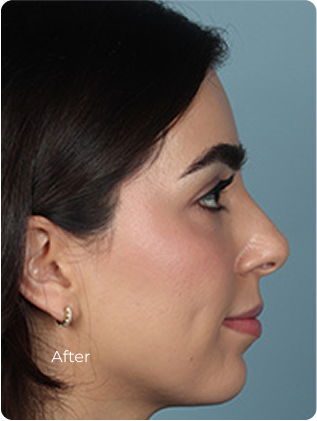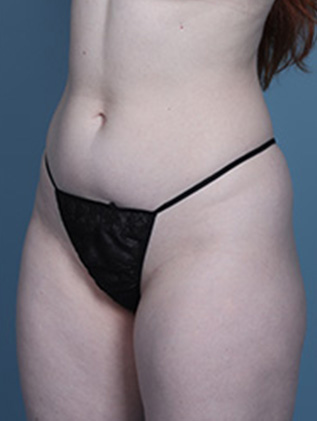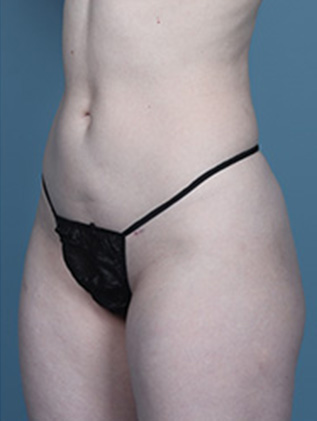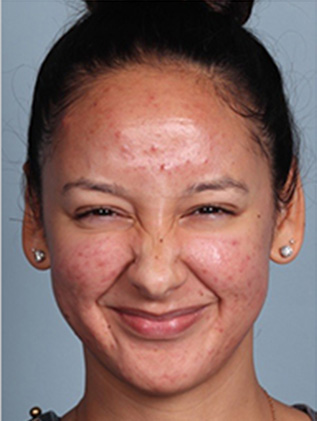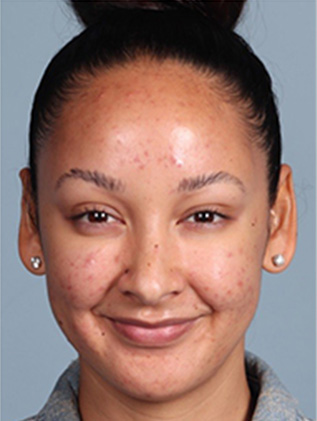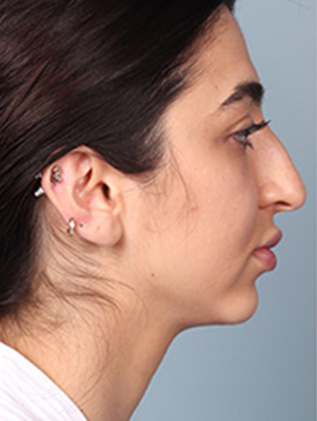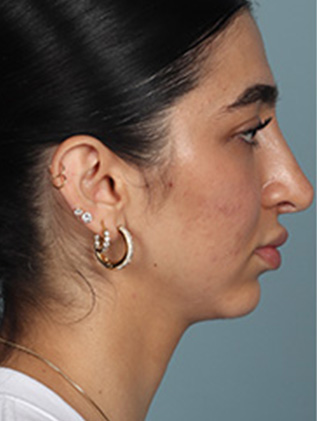When we think of youthfulness, we envision energy, vibrancy, and freshness—qualities that starkly contrast with a tired, saggy appearance. The eyes, often described as the windows to the soul, are the focal point of the face. They play a crucial role in our everyday interactions. We look into a person’s eyes to understand their emotions and feelings. Maintaining eye contact during conversations is a widely accepted norm. Unfortunately, the eyes are also among the first features to show signs of aging. This is why procedures like Lower Blepharoplasty have become increasingly popular. They rejuvenate the eye area and restore a youthful appearance.
Several characteristics define youthful eyes. Firstly, the lid-cheek junction—the distance between the eyelid and the cheek—is a key factor. A short lid-cheek junction is associated with a youthful appearance, while a longer junction creates a hollow, older look. Youthful lower eyelids are fuller and have more volume, free from excess skin and under-eye bags. Beyond the natural aging process, some individuals have a genetic predisposition to excess fat under the lower eyelids, resulting in a puffy and tired look. Lower blepharoplasty is a surgical procedure designed to rejuvenate the lower eyelids, addressing these concerns and restoring a youthful appearance.
Understanding Aging Changes in the Lower Eyelid
The aging process brings about characteristic changes in facial shape, significantly impacting the lower eyelid and midface. As we age, two simultaneous factors contribute to the aging of the lower eyelids. Firstly, there is a loss of eyelid fat, particularly in the Suborbicularis Oculi Fat (SOOF) pad, which sits beneath the bone and transitions into the cheek. This fat pad, located underneath the orbicularis oculi muscle, creates a smooth and beautiful transition from the bony eyelid down to the cheek. With age, the diminished SOOF results in a hollow look, as the fat pad depletes from the inner corner to the outer segment of the eye. This leads to a visible crescent-shaped outline of the bone along the entire orbital rim.
The second factor is the addition of softer tissue, either in the form of excess skin or puffiness due to excess fat. It may sound contradictory that one can both lose and gain fat; however, the fat loss occurs below the orbital rim, while the excess fat accumulates above it, from the orbital rim to the eyelashes. Thus, fat loss happens in the lid-cheek junction area, while aging leads to an increase in fat under the eyelids. These changes include a deepening fold along the orbital rim, known as the tear trough, increased prominence of the orbital fat pads, dynamic wrinkling of the lower eyelid skin, and a loss of facial volume, leading to flattening and sagging.
The desire to maintain youth and defer the consequences of aging has led surgeons to develop techniques to modify facial shapes surgically. Lower blepharoplasty addresses these specific aging changes by rejuvenating the lower eyelids. This procedure aims to restore the smooth transition between the eyelid and cheek, remove excess skin and fat, and ultimately, create a more youthful and refreshed appearance.
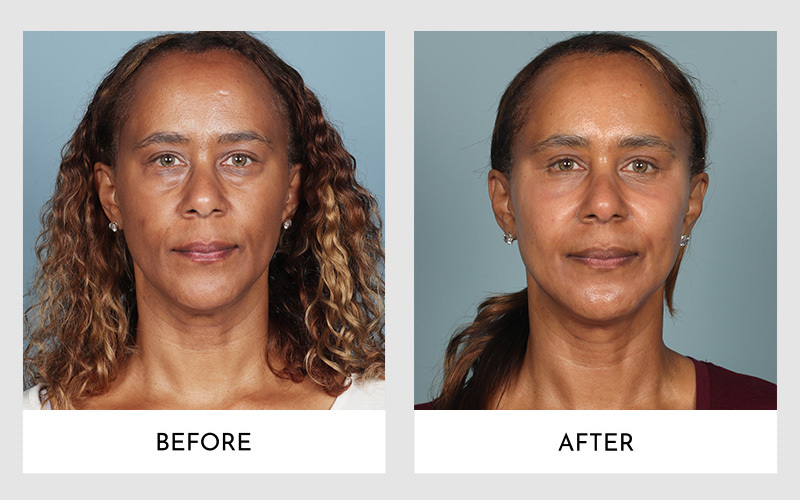
Lower Blepharoplasty: Evolution of Techniques
Lower blepharoplasty has undergone significant advancements over the years. Traditionally, the surgery involved making a large incision under the eyelid to remove fat pads, often leading to hollow eyes and longer recovery times. Over time, techniques have evolved significantly due to advancements in surgical methods and a deeper understanding of eyelid anatomy and aesthetics. Modern lower blepharoplasty often combines several techniques for natural results.
Transconjunctival Blepharoplasty
Nowadays, the preferred method is known as transconjunctival blepharoplasty. Instead of making an incision on the outside of the eyelid, this technique involves a hidden incision inside the eyelid. This allows for easy access to the fat pads without cutting through the muscle, preserving the natural function and appearance of the eyelid. Moreover, this method reduces the risk of eyelid margin contour alterations and external scarring.
Fat Transposition and Contouring
Instead of removing fat, contemporary techniques focus on repositioning or contouring it to prevent hollowing. This approach addresses the entire eyelid area, including mid-face volume, for a more youthful appearance. Skin elasticity and thickness, which decrease with age, are also considered, ensuring comprehensive rejuvenation.
CO2 Laser and Septal Reset
The use of CO2 lasers for precise incisions and minimal discomfort has enhanced the procedure’s safety and effectiveness. Modern methods often combine the septal reset concept with a transconjunctival approach. The septal reset technique involves modest fat pad trimming and transposing fat to the tear trough, creating a smoother transition between the lower eyelid and cheek.
Arcus Marginalis Release
Through the same incision, surgeons can perform arcus marginalis release, preserving and repositioning orbital fat into hollow areas under the eyes. This results in a natural, youthful look and avoids complications like ectropion (outward turning of the eyelid).
In summary, the evolution of lower blepharoplasty techniques reflects a shift towards less invasive methods that prioritize natural results, reduced recovery times, and minimal complications. These advancements have made lower eyelid rejuvenation safer and more effective, offering patients improved aesthetic outcomes and overall satisfaction.
Recovery and Aftercare of Lower Eyelid Blepharoplasty
Lower blepharoplasty requires general anesthesia. During the procedure, Dr. Macias will make an incision along the lower lash line to remove excess skin and fat. If there is no excess skin, the incision will be made inside the lower eyelid to address only the fatty deposits beneath the eyes. The incisions will be closed with sutures, and you can typically go home the same day, provided there are no complications. You can then begin your healing process.
Immediate Post-Operative Care
After lower eyelid blepharoplasty, patients should anticipate some swelling and bruising around the eyes, typically peaking within the first 48 hours. Applying cold compresses during this time can help reduce swelling. It’s crucial to keep the head elevated, even while sleeping, to minimize fluid accumulation.
Pain Management
Mild discomfort or tightness around the eyes is normal. Surgeons usually prescribe pain medications to manage this. Over-the-counter pain relievers like acetaminophen can also be used, but it’s important to avoid medications that can increase bleeding, such as aspirin or ibuprofen.
Hygiene and Wound Care
Maintaining the cleanliness of the surgical area is essential to prevent infection. Patients should gently clean the area around the eyes with prescribed antiseptic solutions or mild soap and water, following the surgeon’s instructions. Avoid rubbing or applying pressure to the eyes.
Medication and Eye Drops
Surgeons often prescribe antibiotic ointments or eye drops to prevent infection and ensure proper healing. Lubricating eye drops can help alleviate dryness and irritation, which are common in the initial recovery phase.
Activity Restrictions
Patients should avoid strenuous activities, heavy lifting, and bending over for at least two weeks to prevent increased blood flow to the eyes, which can exacerbate swelling and bruising. It’s also advisable to refrain from activities that could strain the eyes, such as reading or screen time, for the first few days.
Follow-Up Appointments
Regular follow-up appointments with the surgeon are necessary to monitor healing and address any concerns. Stitches, if used, are typically removed within five to seven days post-surgery.
Long-Term Care
Swelling and bruising usually subside within two weeks, but subtle swelling may persist for several months. Patients should protect their eyes from sun exposure by wearing sunglasses and applying sunscreen. Full results are generally visible after a few months once the tissues have completely healed.
Lower Eyelid Surgery Complications and How to Minimize Them
All surgeries carry risks, and lower eyelid blepharoplasty is no exception. While complications can arise, they can be minimized with the right expertise and technique. Despite its popularity, lower eyelid surgery is not a one-size-fits-all procedure. Many complications result from a lack of understanding of the eyelid’s anatomy and support structures. Despite its seeming simplicity and popularity, lower eyelid surgery requires meticulous attention to avoid complications related to the intricate structures of the eyelid.
Common Complications
A common complication of eyelid surgery is lower eyelid retraction, which can result in a rounded appearance of the eyes and the loss of their characteristic shape. This complication can be avoided by customizing the procedure to the patient’s eye instead of using a one-size-fits-all approach. Lower eyelid retraction was common with the transcutaneous blepharoplasty technique, where the incision is made under the lower eyelid, just below the eyelashes. This technique has been largely replaced by more advanced methods due to its potential to compromise the eyelid’s structural integrity and disrupt its natural layers, potentially leading to issues such as sagging, eyelid rotation, and discomfort.
Skin Removal Misconceptions
Another common practice is the removal of excess skin to improve the appearance of fine lines and wrinkles. This approach is based on the misconception that wrinkles are primarily caused by excess skin. However, removing too much skin can worsen retraction, making the eyes appear more rounded and potentially causing a shortage of protective skin. This can disrupt the even distribution of tears over the eyes, impairing eye health and potentially leading to difficulties with complete eye closure during sleep.
Infection
As with any surgical procedure, there is a risk of infection. Proper wound care and adherence to postoperative instructions significantly reduce this risk. Signs of infection include increasing redness, swelling, and discharge which should be addressed promptly by a healthcare provider.
Minimizing the Risks
It is always advisable to focus on minimizing the risks of complications rather than opting for revision surgery, which can be both costly and inconvenient. Many individuals seek cheaper surgical options to save money, but it is important to recognize that affordability often comes at the expense of quality. Lower-cost surgeries frequently involve less experienced practitioners or substandard materials, increasing the likelihood of complications. These complications may lead to additional procedures to correct the initial outcome, ultimately resulting in higher costs and extended discomfort from undergoing the same surgery twice.
Choosing a highly trained and experienced professional with a proven track record of successful results is essential. Investing in a reputable surgeon not only enhances the likelihood of a satisfactory outcome but also reduces the risk of complications and the potential need for corrective surgery. While the initial cost may be higher, the long-term benefits of quality care, including fewer complications and a more favorable aesthetic result, are well worth the investment. Prioritizing expertise and proven success over initial cost savings ensures a safer, more effective procedure and minimizes the chances of incurring additional expenses and experiencing unnecessary discomfort.
Alternatives to Lower Blepharoplasty
For those seeking alternatives to achieve a refreshed look without undergoing surgery, several non-surgical and minimally invasive options are available. When considering alternatives to lower blepharoplasty, it’s essential to evaluate your specific concerns, desired outcomes, and any potential risks. Consulting with a qualified cosmetic professional can help you determine the best approach for your needs.
Dermal Fillers
Dermal fillers are injectable treatments designed to add volume and smooth out wrinkles. In the lower eyelid area, hyaluronic acid fillers can be particularly effective in reducing the appearance of hollowness and dark circles. Often, dermal fillers are used in conjunction with lower eyelid blepharoplasty to enhance facial volume and achieve a more balanced appearance.
In many cases, lower eyelid fat prolapse is linked to insufficient projection of the cheekbone and underlying bone structure. This creates a paradox where excess fat pushes forward while the deficient bone structure fails to provide adequate support. To address this issue, hyaluronic acid fillers can be strategically placed at the bone level to improve bone volume and contour, thus enhancing overall facial harmony.
Benefits:
- Non-surgical: Minimal downtime compared to surgery.
- Quick Results: Noticeable improvements can be seen immediately.
- Reversible: Some fillers can be dissolved if necessary.
Botox and Dysport
Botox and Dysport are neurotoxins that temporarily relax the muscles around the eyes, reducing the appearance of fine lines and wrinkles.
Benefits:
- Non-Invasive: No recovery time required.
- Preventative: This can help prevent the deepening of lines over time.
Chemical Peels
Chemical peels use a chemical solution to exfoliate the skin, promoting the growth of new, smoother skin. For the lower eyelid area, mild peels can help improve skin texture and tone. By exfoliating the outer layer of skin, peels stimulate collagen production, leading to firmer and smoother skin. This helps to diminish the crepey texture often associated with aging eyes. Chemical peels also improve skin tone and pigmentation, addressing issues such as hyperpigmentation, dark circles, and uneven skin tone.
Benefits:
- Improves Skin Quality: Reduces fine lines and discoloration.
- Minimally Invasive: Generally involves minimal downtime.
Laser Therapy
Laser treatments use focused light to stimulate collagen production and improve skin texture, making them an excellent option for rejuvenating the delicate skin around the eyes. Fractional lasers, such as CO2 lasers, are particularly effective in this area. These lasers work by creating micro-injuries in the skin, which trigger the body’s natural healing response and stimulate collagen production. This process results in firmer, smoother skin with reduced fine lines and wrinkles. When it comes to addressing concerns around the lower eyelids, laser treatments can be highly beneficial. The skin in this area is thin and prone to signs of aging, such as fine lines, wrinkles, and hyperpigmentation. Like fillers, sometimes laser treatment can be combined with lower eyelid blepharoplasty to ensure better scar healing and overall results.
Benefits:
- Stimulates Collagen Production: Helps with skin tightening and texture improvement.
- Targeted Treatment: Can address specific concerns like pigmentation and fine lines.
Microneedling
Microneedling involves using a device with tiny needles to create micro-injuries in the skin, which stimulates the production of collagen and elastin. One of the primary advantages of microneedling for the lower eyelids is the improvement of skin texture. As we age, the skin under the eyes can become thin and crepey, leading to a tired and aged appearance. Microneedling triggers the skin’s natural healing response, boosting collagen and elastin production. These proteins are crucial for maintaining skin structure and elasticity, resulting in firmer, smoother skin. The best age to start microneedling is typically in the late 20s to early 30s. At this stage, the skin’s natural collagen production begins to decline, making it an ideal time to introduce treatments that stimulate collagen and elastin. Starting microneedling in this age range can help maintain youthful skin and prevent the early signs of aging.
Benefits:
- Improves Texture and Tone: This can reduce fine lines and improve skin appearance.
- Minimal Downtime: Typically involves only mild redness and swelling.
When considering aesthetic treatments for the lower eyelid area, it’s important to weigh the benefits and limitations of various procedures. Dermal fillers and other non-surgical options offer the advantage of minimal downtime and can address issues such as volume loss and hollowness. However, their results are temporary and may require ongoing maintenance. In contrast, lower eyelid blepharoplasty is a surgical procedure that provides more permanent solutions by directly removing excess fat and tightening skin. While it delivers lasting results and can address more significant concerns, it involves a longer recovery period and carries the inherent risks associated with surgery. Ultimately, the choice between non-surgical treatments and blepharoplasty depends on factors such as the severity of the concerns, desired outcomes, and personal preference.
Frequently Asked Questions
Am I a good candidate for lower blepharoplasty?
Ideal candidates for lower blepharoplasty are individuals who are generally healthy, have realistic expectations, and are bothered by excess fat or skin around the lower eyelids. It’s also beneficial if you have no serious medical conditions that could complicate surgery. Consulting with a qualified cosmetic surgeon can help determine if the procedure is right for you.
What should I look for in a surgeon performing lower blepharoplasty?
When choosing a surgeon, consider their credentials, experience, and specialization in eyelid surgery. Look for board certification in plastic or oculoplastic surgery, check patient reviews, and review before-and-after photos of previous procedures. A thorough consultation should help you assess their expertise and comfort level.
How do I prepare for lower blepharoplasty?
Preparation includes following any pre-operative instructions provided by your surgeon, such as avoiding certain medications, quitting smoking, and arranging for someone to drive you home after the surgery. You might also need to undergo pre-operative tests or evaluations.
Can I use makeup or apply creams around my eyes after surgery?
You should avoid using makeup or applying creams around your eyes until your surgeon gives you the green light. Typically, this is after the incisions have healed and any stitches have been removed.
Conclusion
A youthful look is characterized by a smooth, mostly convex or flat lower eyelid segment that transitions seamlessly into the cheek without any hollow, puffy, or sharp contours. With age, our whole body goes through natural changes, and eyes are one of the first tell-tell signs of a person’s age. Lower blepharoplasty offers a transformative solution for those seeking to rejuvenate their appearance and address signs of aging around the eyes. With advancements in surgical techniques, this procedure has evolved to become safer, more effective, and less invasive, providing natural-looking results with reduced recovery times.
While the procedure can effectively address concerns such as under-eye bags, volume loss, and sagging skin, it is important to have realistic expectations and understand the recovery process. Proper pre-operative preparation and post-operative care are crucial to achieving the best results and ensuring a smooth recovery.
Ultimately, whether opting for lower blepharoplasty or exploring alternative treatments, investing in a skilled and experienced practitioner is key to achieving a satisfying outcome. By prioritizing quality and expertise, you can enhance your appearance safely and effectively, enjoying the benefits of a youthful, refreshed look for years to come.



